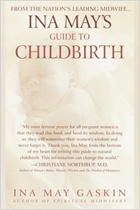
Famed midwife Ina May Gaskin is one of my heroes. She’s the author of Ina May’s Guide to Childbirth and Spiritual Midwifery. Her approach to pregnancy, labor, and birth are transformational. She’s created a birthing atmosphere of loving support at The Farm Midwifery Center in Tennessee where she and fellow midwives have a safety record that’s unparalleled in most hospitals. For example, their rate of transfer to hospitals for C-sections is about 2%. In most hospitals, the rate of C-sections for normal healthy women is now 30-50%.
In the early 1990s, Ina May began to research maternal death rates in the U.S. She was concerned that with escalating hospital birth interventions, such as induced labors and planned C-sections, the rates of maternal deaths would rise dramatically despite the profound medical advances enjoyed by people in the United States. Her research shows that 41 countries have lower maternal death rates than the U.S.
It is well known that the maternal death rate in any given population is a very good indicator of the overall health status of that population. Same with infant mortality. Thus, it was especially shocking when Ina May found that the maternal death rate has actually doubled in the last 25 years. It was 7.5 per 100,000 live births in 1982. In 1999, that rate had risen to 13.2 deaths per 100,000 births. By 2005, it was up to 15.1 per 100,000 live births! In some New York City hospitals, it’s higher still. Moreover, Hispanic and Black women continue to have much higher maternal death rates—perhaps four times as high or higher.
Ina May says, “When I first became curious about the maternal death rate in the U.S., I wondered why it was so difficult to unearth in the medical library. This was in the early 1990s. I noticed a sharp contrast between how maternal deaths are counted here in the U.S. and the U.K.’s system of Confidential Enquiries, where four countries cooperate to achieve 100% ascertainment of maternal deaths that are directly related to pregnancy and birth. (They claim 97% accuracy.) According to the CDC, the actual number may be 1.6 to 3 times the figure that is published annually. I find this shocking, especially since we know that the maternal death rate has been rising in recent years—something that isn’t happening in other countries.”
To humanize and emphasize this often-hidden problem, Ina May began collecting the names of women who have died from pregnancy-related causes since 1982 (that being the year when the maternal death rate was the lowest). In 1999, inspired by the AIDS Quilt, she started the Safe Motherhood Quilt Project. Ina May says, “The purpose of the Safe Motherhood Quilt Project is to bring awareness to the rising maternal death rate in the United States and to the substantial degree of underreporting of such deaths. Reduction of the maternal death rate depends upon complete ascertainment so that it is possible to learn from past mistakes.” To date, Ina May has collected 230 names, and quilt pieces have been completed for 163 women. The rest are being worked on.
I was in San Diego when Ina May unveiled it at the Pre and Perinatal Psychology annual meeting. It honors every mother who has died in childbirth or in the postpartum period. As she tells each of their stories, you quickly realize how truly tragic and utterly preventable most of these deaths have been. It raises consciousness because you realize that these women aren’t just faceless, nameless statistics. They were mothers, wives, sisters, and lovers—all of whom have left behind motherless families, a mark that will affect their children and families for generations.
Ina May points out that because many of these women are admitted to the hospital several weeks after their baby was born, their deaths are not always attributed to the birth intervention that was responsible for the original problem. Examples include infection, pulmonary embolism, and bowel obstruction. Thus the problem is less obvious than, say, a mother who dies in labor or of postpartum hemorrhage in the operating room. Ina May adds, “We’re the only wealthy country with insurance policies too stingy to provide women with routine home visits by a trained professional during the first 10 days after birth, and we actually have women dying from this.” Yet, these deaths are not being counted.
“What I want to happen is for the U.S. to create a system of confidential enquiries that is modeled after the U.K. example, which is considered to be the “gold standard” in epidemiology for maternal mortality. Not only would this require accurate, honest reporting, it would involve audits, increased rates of autopsy, complete review and analysis of maternal deaths, with recommendations being made once such analyses are done. Hospitals would be in charge of conducting their own mortality reviews; this would be done by impartial, confidential committees of physicians and midwives,” says Gaskin.
Ina May has had many volunteers, including family members, who undertake the designing and creating of a quilt square to represent each individual woman. Her goal for the project is to bring about legislation that will provide for the accurate collecting of data that can be used to prevent the tragedy of unnecessary maternal deaths.
I invite you to visit Ina May’s Web site and learn more about the Safe Motherhood Quilt Project. And during this Mother’s Day month, please remember that Ina May, and many others, has dedicated her life to supporting women to labor and birth pleasurably and normally. Relish the process of pregnancy, labor, and birth as the ideal preparation of baby and mother for their life together.
Learn More — Additional Resources
- Mother-Daughter Wisdom by Christiane Northrup, M.D.
- Women’s Bodies, Women’s Wisdom by Christiane Northrup, M.D.
- Ina May’s Guide to Childbirth by Ina May Gaskin
- Spiritual Midwifery by Ina May Gaskin


